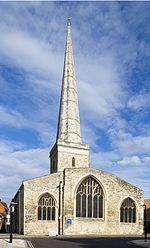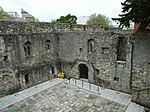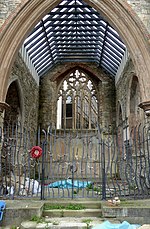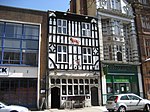St Joseph's Church, Southampton
1830 establishments in England19th-century Roman Catholic church buildings in the United KingdomGothic Revival architecture in HampshireGothic Revival church buildings in EnglandGrade II listed Roman Catholic churches in England ... and 4 more
Grade II listed churches in HampshireRoman Catholic churches completed in 1845Roman Catholic churches in HampshireRoman Catholic churches in Southampton

St Joseph's Church is a Roman Catholic parish church in Southampton, Hampshire. It is situated on Bugle Street, in the centre of the city, north of Town Quay. The church chancel was designed by Augustus Pugin and built in 1843. It was the first Catholic church founded in Southampton after the Reformation. It was the pro-cathedral of the Diocese of Portsmouth in 1882. It is a Grade II listed building.
Excerpt from the Wikipedia article St Joseph's Church, Southampton (License: CC BY-SA 3.0, Authors, Images).St Joseph's Church, Southampton
Bugle Street, Southampton St Mary's
Geographical coordinates (GPS) Address External links Nearby Places Show on map
Geographical coordinates (GPS)
| Latitude | Longitude |
|---|---|
| N 50.89925 ° | E -1.4057 ° |
Address
St Joseph's Catholic Church
Bugle Street
SO14 2AL Southampton, St Mary's
England, United Kingdom
Open on Google Maps











